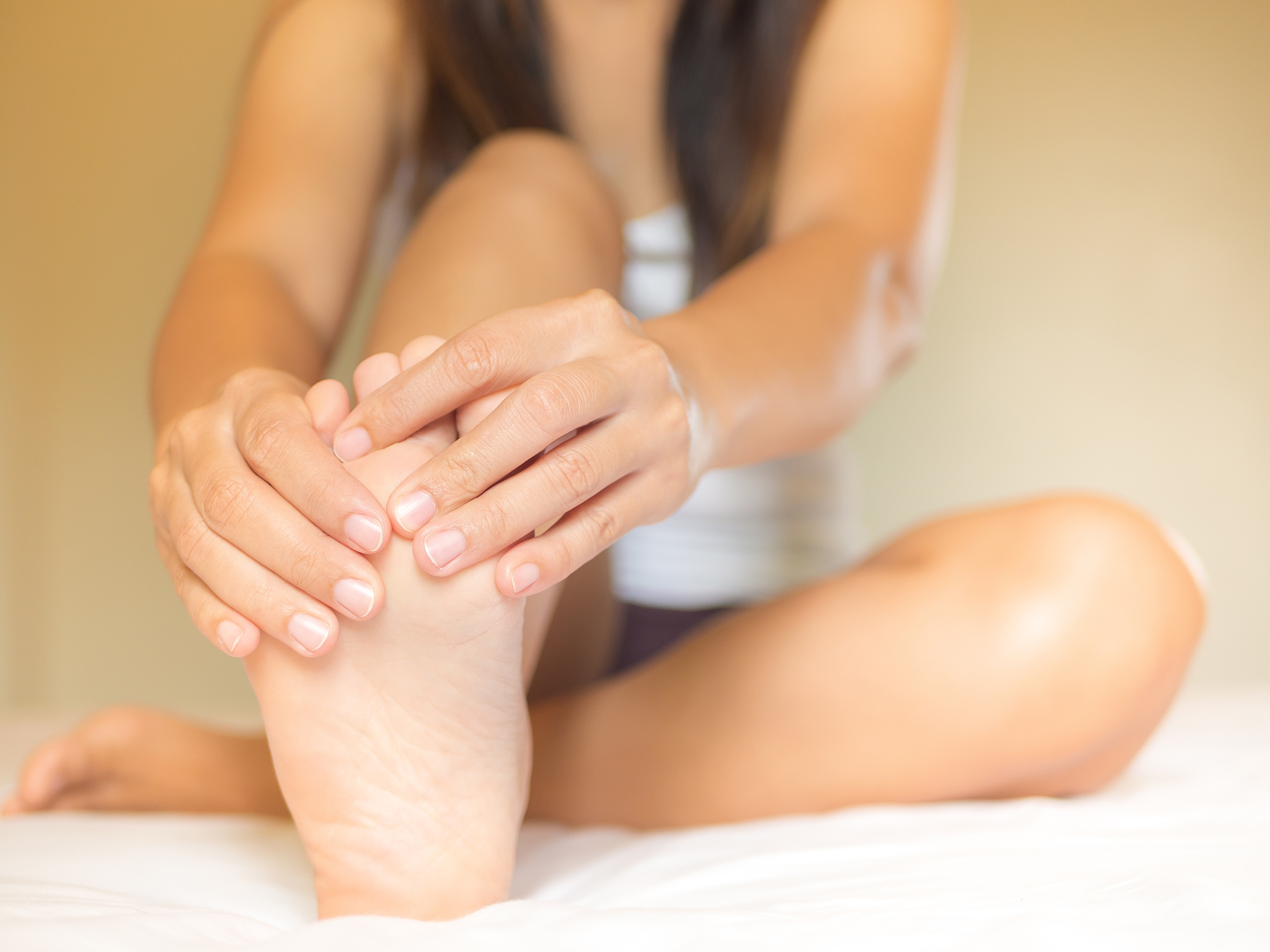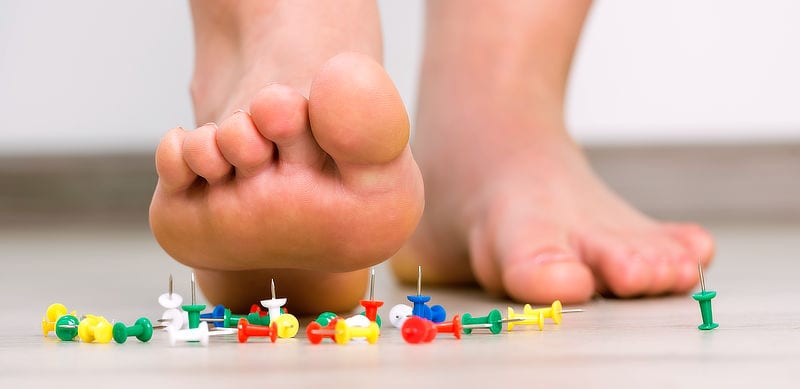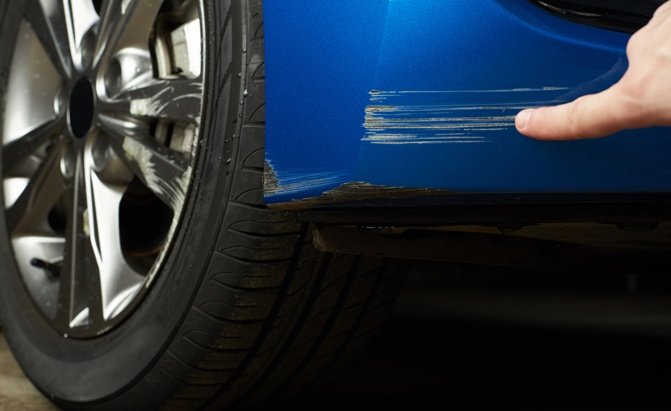Plantar fasciitis is a bothersome, excruciating, and an annoying issue, yet fortunately, you can treat it yourself utilizing some basic gear in the event that you realize what caused it. No going on vacation work and forking out to take a quick trip and see a physio!
This article will give you a total rundown of the best medicines for plantar fasciitis that you can put forth a concentrated effort…
Is your Heel Pain Plantar Fasciitis?
Hints that you might be experiencing plantar fasciitis:
- Pain and solidness in the impact point and additionally inside the curve of the foot
- Pain when you first set your foot on the floor when waking up.
- Your pain diminishes with movement, yet then the pain increments as you spend more time on your feet throughout the day
- Increased pain if you sit for a while then stand back up on your feet.
- When you press under your foot with your finger, you locate an agonizing spot within the impact point bone where the back finish of the plantar fascia joins. This difficult zone may stretch out into the curve of the foot
What the Plantar Belt does
The initial step to understanding the reasons for plantar fasciitis is to get a fundamental thought of how the foot functions.
The plantar belt is a thick band of strong white tissue under the curve of your foot that runs from your heel bone to the wad of your foot.
It is essential for a framework in the foot and lower leg that keeps your body steady as you stand, walk, or run. The framework comprises of muscles, ligaments, bones, tendons and the plantar fascia.
The part of the plantar fascia is to shield your foot from falling while there’s a weight on the foot. Picture it as a link that runs between the impact point and the toes and fixes when you place weight on your foot. It additionally has a significant influence on moving burden from the impact point to the bundle of the foot while you walk or run.
What causes plantar fasciitis?
Plantar fasciitis is caused when the load that the plantar fascia has to work against is too high, causing it to develop micro-tears and inflammation.
The measure of power the plantar belt needs to manage can be affected by movement (running versus strolling), body weight, surfaces (grass versus asphalt), foot curve tallness (high versus level curves), muscle pressure (tight calves) just as feeble muscles.
The injury can happen abruptly or after some time through redundant strain.
Normal reasons for plantar fasciitis:
- The most normal reason for plantar fasciitis I find in my facility is the point at which your shoes don’t uphold your foot curve enough and you’re on your feet for quite a while. Models are a long shopping trip, going touring in flip-flops while on vacation or running a perseverance race.
- If you put on a great deal of weight it will build the power through your feet and the plantar fascia should work more earnestly to keep the foot curve from imploding.
- Your calves or different muscles in your legs are excessively close.
- If you abruptly take up running and try too hard, or on the off chance that you accomplish something like run to get transport while wearing some unacceptable shoes.
- If you walk or run on hard surfaces. Softs surfaces help to ingest a portion of the stun made when you run or walk, however in the event that you do it on hard surfaces the plantar belt needs to manage everything.
- If different muscles in your lower body, as far as possible up to the muscles in your bum, aren’t sufficient and don’t control the leg or ingest a lot of the stun during running.
- But first, how about we move something: what you shouldn’t do when you’ve found that you have plantar fasciitis.
- Your first sense for treating exceptionally agonizing plantar fasciitis may be to go after the counter inflammatories. That will be of basically no utilization, particularly in the event that you’ve had the torment for some time. Different wounds as a rule start with irritation before the recovery period of the harmed tissue kicks in. Plantar fasciitis is extraordinary. It generally skirts the irritation and goes into a degeneration or breakdown stage.

Plantar Fasciitis Treatment: What is the Best?
There will never be a solitary treatment to fix plantar fasciitis, essentially in light of the fact that there can be so various reasons why you create heel torment. The plantar fasciitis medicines underneath can be generally isolated into medicines that diminish pressure in the plantar belt and medicines that reinforce the plantar fascia.
The best medicines as indicated by the examination are:
- Stretching
- Massage
- Taping the foot
- Foot orthotics or steady inward bottoms in shoes
- Night supports
- Low-level laser treatment
- Specific shoes or turning which shoes you wear
- Weight misfortune
- Strengthening works out
Extending for Plantar Fasciitis
The lower leg muscles are associated with the plantar fascia by means of expansion from the Achilles ligament and I generally find that they are tight in my patients who gripe of heel torment. Likewise, with the back rub, you ought to incorporate stretches for the plantar belt as well as for the remainder of the leg and back. An expression of alert – you can exacerbate the side effects on the off chance that you OVER-STRETCH.
Realize what extends you ought to accomplish for plantar fasciitis.
Back Rub for Plantar Fasciitis
It is anything but difficult to rub your plantar belt just as your calf utilizing different measured balls and froth rollers. The ebb and flow research proposes that froth roller back rub can be similarly as successful as a back rub from an advisor, with regards to relief from discomfort and expanding muscle length.
Back rub for plantar fasciitis ought to incorporate all the muscles along the rear of your body – not simply the plantar belt.
- Two different medicines once in a while dispensed by physiotherapists that might alleviate or fix your plantar fasciitis are ultrasound and electrotherapy.








